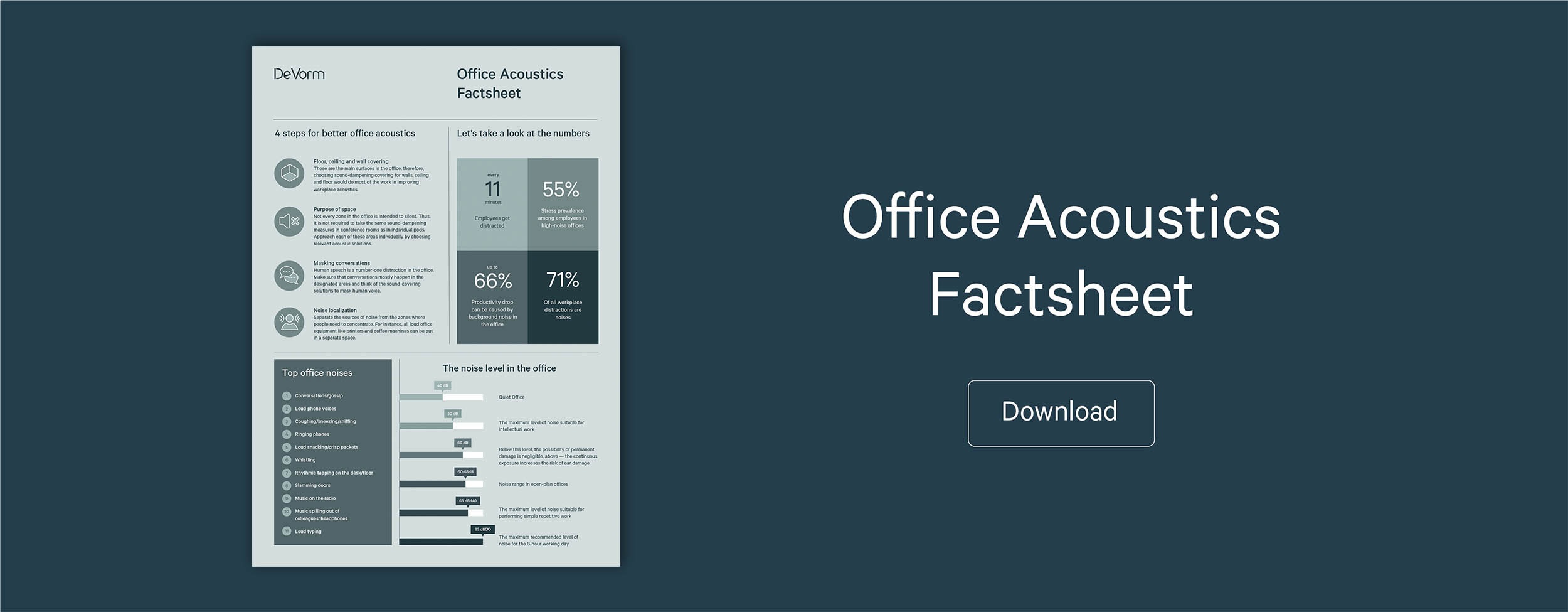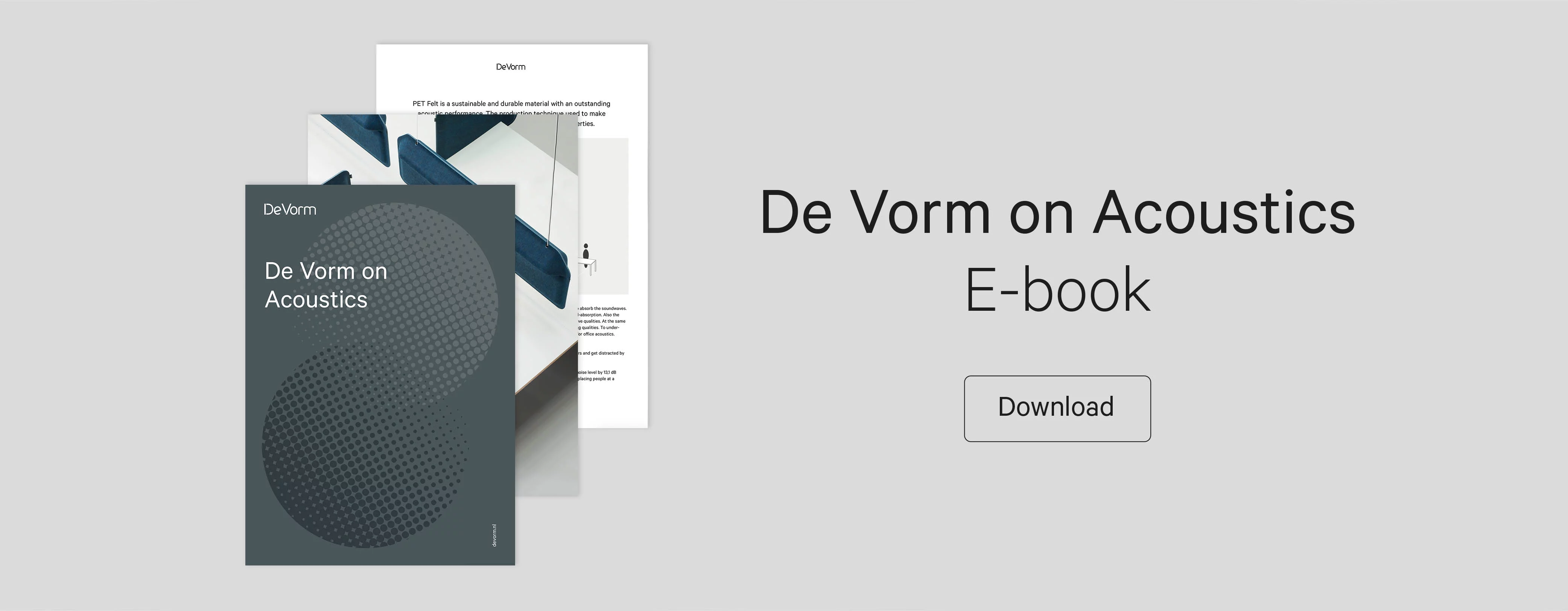Journal
Solve for Acoustics with PET Felt | Complete Guide
PET Felt is a sustainable interior product with outstanding acoustic performance. But how exactly does it work and which problems can it solve? We have answered these and other questions in the following guide. It will help you better understand the acoustic properties of PET Felt and choose the right solution for your specific needs.
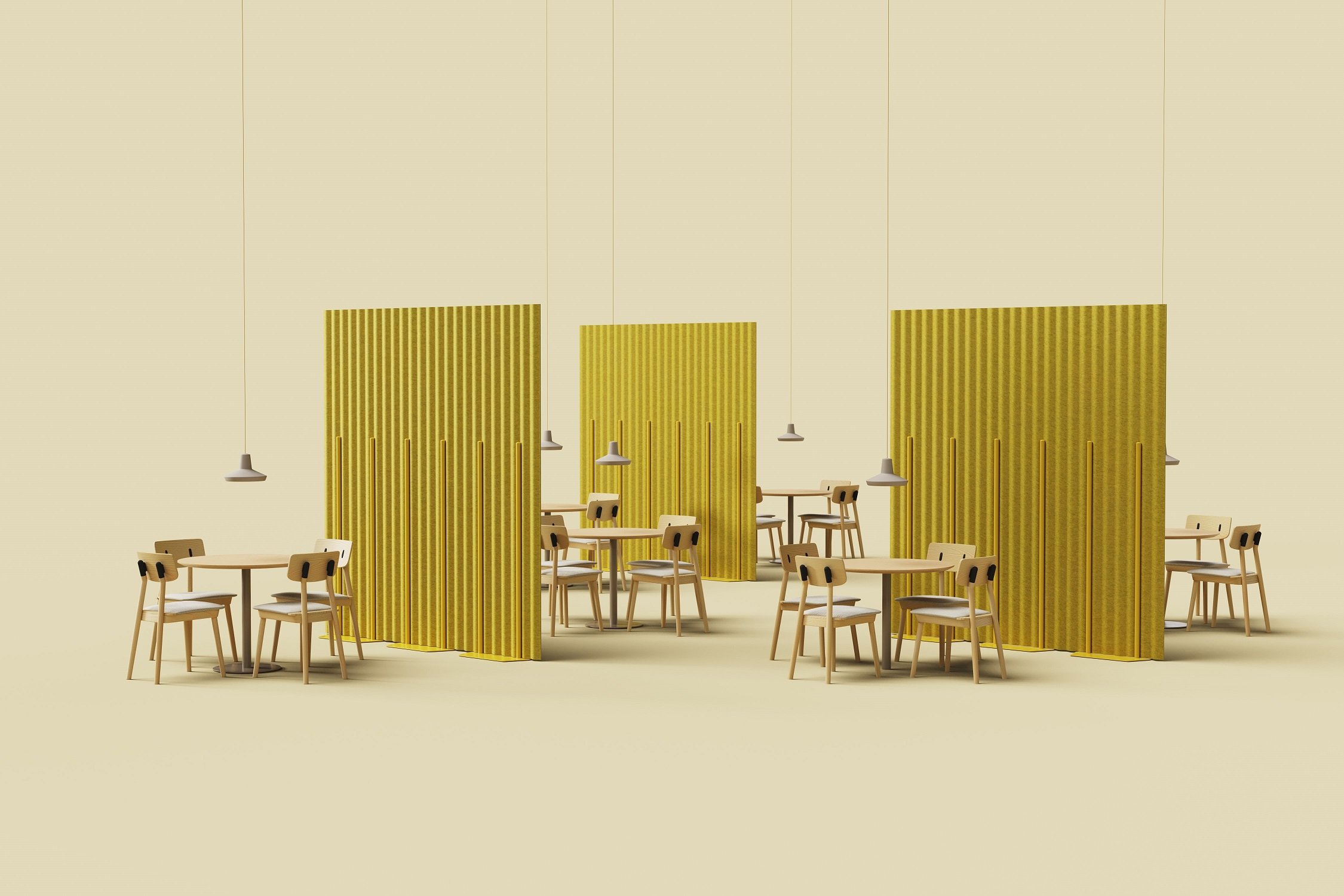 How PET Felt works
How PET Felt works
The main acoustic effect that PET Felt has is sound absorption. What exactly does it mean? When a sound encounters a material, several processes take place. Depending on its nature, a material can absorb the sound energy by transforming it into heat. If the sound energy is absorbed only partly, the rest of it will travel through the material. Another scenario is that a material will reflect the sound waves.
.jpg?width=700&name=Mute%20Fit%20Illustrations%20(1).jpg)
The rule of thumb is that dense, hard surfaces reflect the sound waves, while soft and porous materials absorb the sound. The latter is the case with PET Felt.
There are three ways that sound energy is dissipated in a porous material:
- through viscous effects within the air that is trapped inside the porous material, which is transferred into heat
- by friction between air and the porous material which is also transferred into heat
- through damping of the sound energy by setting the material into motion with sound pressure, which transfers the sound energy into kinetic energy.
Thanks to the production technique, PET Felt panels have an optimal structure and thickness to serve as an effective absorber.
.jpg?width=700&name=Mute%20Fit%20Illustrations4%20(1).jpg)
There are several types of acoustic products made of PET Felt:
- Wall panels (like Mute Flow, Mute Flat and Mute Fit)
- Desk dividers (for example, AK 1 and AK 2)
- Room dividers (Mute Flow Room Divider, AK 3 + 4)
- Ceiling-suspended panels (like Mute Flow Floating and Onde)
Each of these PET Felt products was designed to solve a particular acoustic problem. And to choose one, you need to know the problem first.
Choosing the right solution
To understand if PET Felt is the right solution, it is important to define the exact problem you are dealing with. What people simply call “noise” can relate to many different processes. And without determining them, you can’t choose the right acoustic treatment.
So, begin with answering the following questions:
1. Which noise(s) causes the most disturbance?
2. Where is it located - inside or outside the room?
3. Does it come from a single source or from multiple sources?
4. What type and size of space are you dealing with?
Depending on your answers, you will have to consider different factors in order to choose the right acoustic measures:
Factor #1: The noise is coming from the outside
Let’s assume that most of the noise is coming from the outside (like traffic hum) or from other parts of the building (for instance, from the adjacent room). If that’s the case, the most effective measure is to block the sound. In other words, you need prevent it from entering your room. Usually, the architects take care of it during the construction by installing soundproof window systems, insulating the walls and so on. Building acoustics requires comprehensive and complex measures; interior products, like carpets and wall covering are not the main tools to use here. Likewise, PET Felt is not the most effective solution to deal with the outside noises.
Factor # 2: The source of noise is located inside the room
When the source of noise is located inside the room, PET Felt comes in handy. First of all, it is important to understand that the problem is usually not the sound itself, but it’s reverberation. Before a sound becomes inaudible, it travels through the room and hits all sorts of surfaces. As we already established, hard surfaces, like concrete floor and ceiling, reflect the sounds. And the more the sound bounces off, the longer it persists in a room. As a result, the reverberation allows the sound to build up to a level, louder than the direct sound.
To solve this problem, you need to minimise sound reflection. In every room, the main reflective surfaces are walls, ceiling and floor. So, the sound can bounce off in all possible directions. To prevent this from happening, you need to add absorptive materials, such as carpets, curtains or acoustic wall panels. PET Felt wall panels will absorb part of the sound - as a result, less of it will be reflected back into the room. Likewise, ceiling-suspended PET Felt panels will prevent the sound from bouncing between the floor and ceiling, minimising the so-called floor-to-ceiling slap echo.
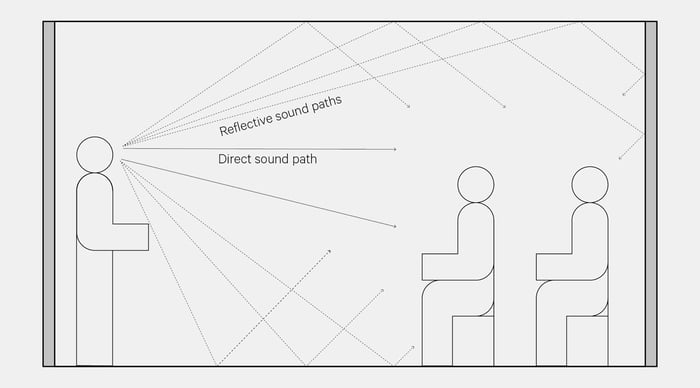
Factor #3: There is a single source of noise
When most of the noise is coming from a single source - for instance, a calling station or a printer, - the best solution is to separate this source from the rest of the space. Again, this can be done by special insulation measures, like soundproof walls and doors. Also, you have to make sure that you absorb as much sound as possible right at the source. Then, less of it can travel through the rest of the space. For instance, the walls of phone booths and calling stations are often covered with acoustic material. PET Felt panels can be a good choice here - consider our Mute series.
Factor #4: There are multiple sources of noise
When you are dealing with multiple sources of noise, for instance, talking colleagues distracting each other, a single acoustic measure might be not enough. In this case, sound behaves unpredictably, depending on the type of space and location of the source. For instance, people can move around the office, stand or sit - in each of these situations, the sound of their voices will travel differently. Therefore, you need to address the problem with more complex measures.
As we already mentioned, most of the sound bounces off walls, ceiling and floor. Covering these surfaces with soft, acoustic materials will already have a major effect. Secondly, you can install sound-absorbing barriers between the sources of noise. Then, sound waves cannot travel freely and add up together. For instance, AK 1 and AK 2 desk dividers separate the workstations and prevent employees from distracting each other.
Factor #5: A space is small
In small rooms, walls should receive special attention. The reason is that the sound is more likely to bounce off the wall before it drops dead. Therefore, in order to minimise the noises in small rooms, like office pods or meeting rooms, you need to apply special wall coverage. Opt for acoustic wall panels, like Mute Flow, Mute Fit or Mute Fraction. Additional measures, such as ceiling baffles and acoustic lighting, will also help absorb the sound, preventing it from leaving the space.
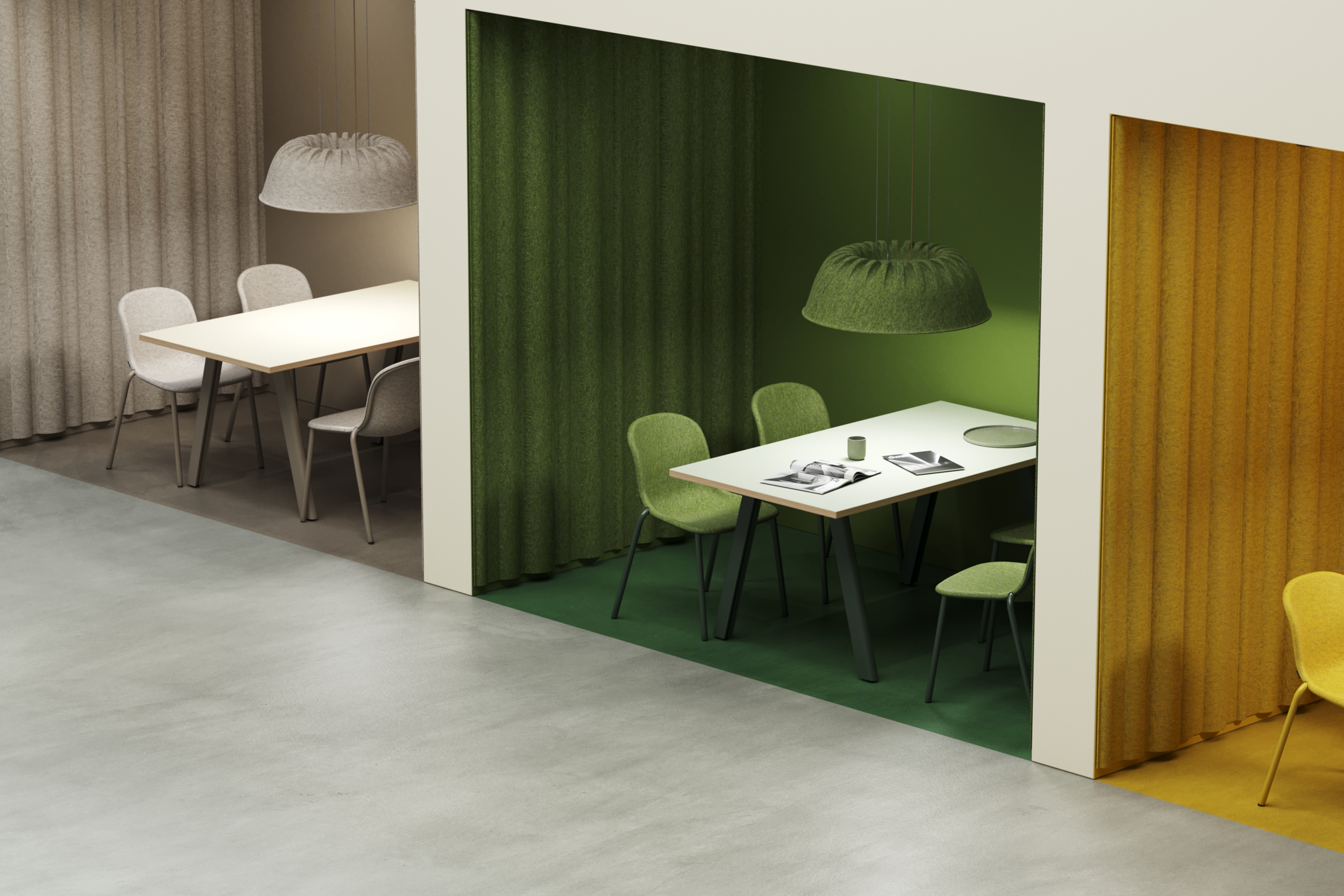
Factor #6: A space is large and open
On the contrary, in large spaces, the sound waves may drop dead even before reaching the walls. However, there is still a chance that the sound will bounce off the ceiling and freely travel through the room. This is a common issue with open-plan offices. Therefore, we recommend using the ceiling-suspended panels in such interiors. They will minimise the sound reflection from the ceiling. Consider Mute Flow Floating and Onde Floating - such solutions are ideal for spaces where sound waves are likely to reach the ceiling and reflect from it.
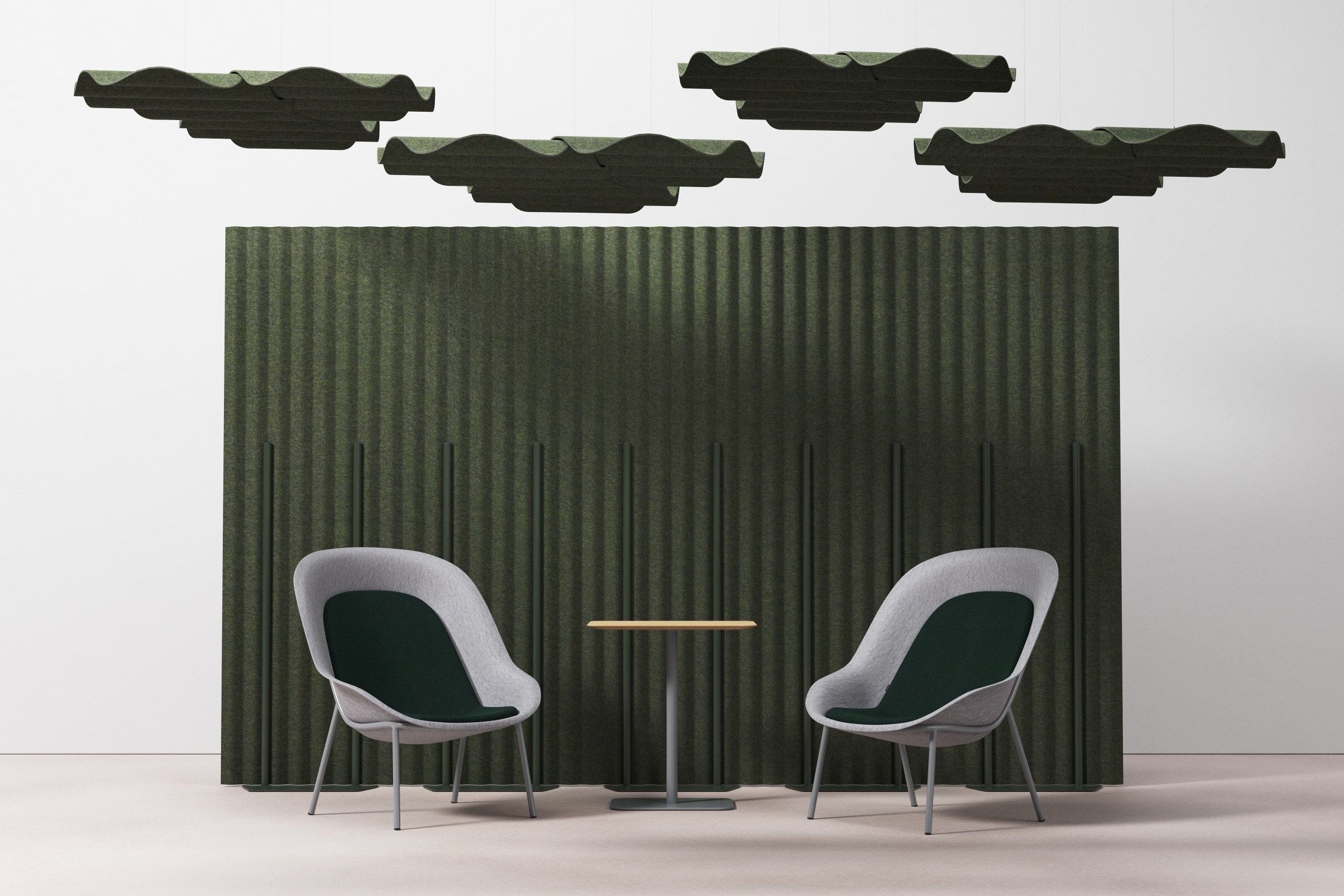
When the problem with ceiling reflection is fixed, it is also important to prevent the sound from travelling freely in a room. Of course, some interior elements, like furniture and plants, will already help with that. Additionally, you can allocate the freestanding dividers, that will “catch” the sound waves. Consider Mute Flow and AK 3 + 4 room dividers.
Solving for frequency and intensity
Every sound has a certain frequency (the tone of the sound measured in Hertz) and intensity (the loudness of the sound measured in decibels). To learn more about the properties of sound, you can download our whitepaper.
Why do these matter?
By measuring the intensity of sound, you can determine whether there is a real acoustic problem in a given space. For instance, a recommended sound level for offices is 45-55 dB, while at 85 dB a continuous exposure leads to hearing damage. When working on acoustics, you will need to keep track of this value in order to determine whether you’ve brought the noise down to the desired level.
Knowing the frequency of sounds is important to choose the most effective acoustic measure. All sounds are typically divided into low-frequency (truck), mid-frequency (human speech) and high-frequency (whistle).
.jpg?width=700&name=Mute%20Fit%20Illustrations3%20(1).jpg)
Take frequency into account
To achieve the maximum sound absorption, you should position the material at a distance of a quarter of the wavelength from the sound source. In acoustics, this is called a quarter-Lambda rule. Since different frequencies have different wavelengths, the positioning of the absorptive material should be adjusted for each frequency.
Also, you should take into account that acoustic products are better at dampening high frequencies than low frequencies. It is easier to dampen high frequencies since their wavelength is smaller. As a result, the precise placement of the absorption material is less relevant, considering the quarter-Lambda rule.
As a result, the excessive absorption can make a room sound dull. The letters s, f, t and d are located in the high-frequency range. The o, m, n, a and e are in the low-frequency range. When the absorption measures are not properly arranged, it may happen that certain syllables will fall out. As a result, it will be hard for people to understand each other.
To avoid this situation, you can apply 3D-patterned wall panels, like Mute Fraction. Thanks to the wavy pattern, the panels create an alternating distance from the wall. This is beneficial for absorbing sounds with different frequencies more evenly.
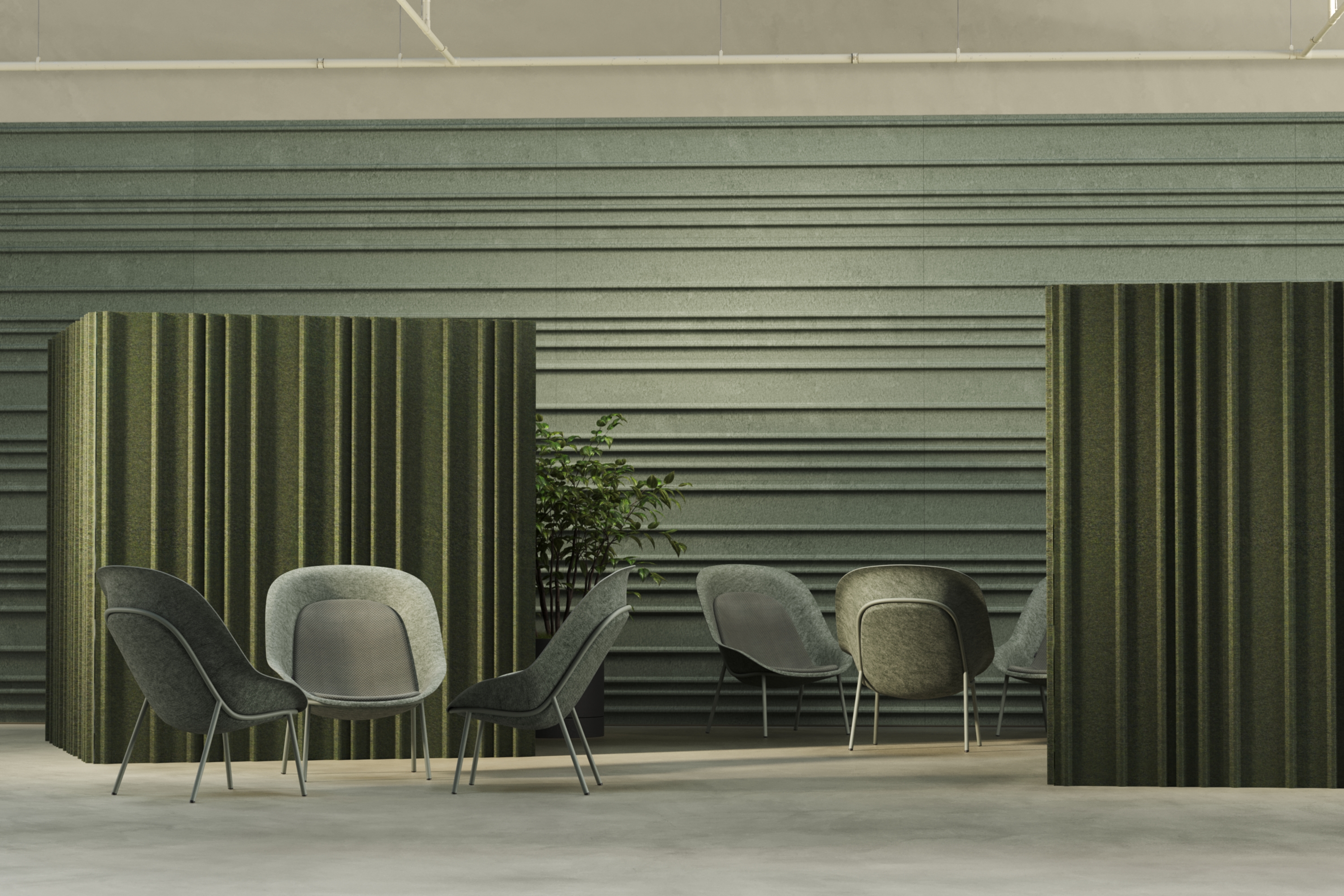
Wrap-up
PET Felt has proven to be an effective solution for sound absorption. Therefore, it is widely used in various sound-dampening solutions, such as wall panels, room dividers and acoustic screens. However, keep in mind that the application largely depends on the exact acoustic problem you are dealing with. Consider the source of the sound and the type of space before choosing the best suitable option.
